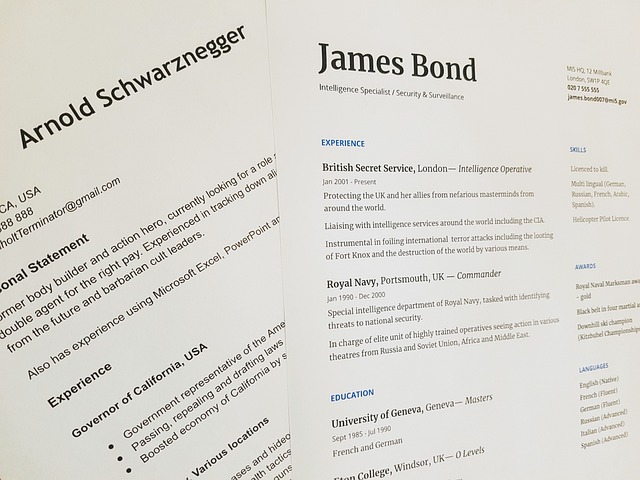Writing a resume as a college student can be a daunting task, but with the right approach and guidance, it can become an easy and successful process. A well-written resume can make a significant difference in landing an interview, which can lead to a job or internship opportunity. In this guide, we will take you through the steps of creating a powerful resume that will showcase your skills and qualifications and grab the attention of potential employers.

- Start with a header: Your resume header is the first section of your resume, and it should contain your full name, email address, and phone number. You can also include your home address or LinkedIn profile link, but it is not necessary.
- Write a summary or objective statement: Your resume summary or objective statement should be a brief statement that describes your career goals and summarizes your skills and experiences. If you have little or no work experience, consider writing an objective statement that highlights your educational accomplishments, relevant coursework, and any relevant extracurricular activities. If you have work experience, write a summary statement that showcases your achievements, strengths, and experience.
- List your education: In this section, you should list your degree program, major, and expected graduation date. You can also mention any academic honors, awards, or scholarships you have received. If you have a high GPA, you can include it, but it is not necessary.
- Highlight your relevant coursework: If you are still in school, your coursework can be a valuable asset in demonstrating your skills and knowledge. List any coursework that is relevant to the job or internship you are applying for, and highlight any projects, assignments, or research that you have completed.
- Showcase your skills: Your skills section should be a list of skills that are relevant to the job or internship you are applying for. This section can include both hard skills (e.g., proficiency in a specific software program) and soft skills (e.g., communication skills, teamwork skills). Be sure to tailor your skills section to the job requirements and highlight your most relevant and impressive skills.
- Include your work experience: If you have any work experience, include it in this section. List your previous jobs or internships, the dates you worked there, and your job title. For each position, include a bullet-point list of your job duties and accomplishments. Focus on highlighting your achievements and quantify them with numbers or percentages whenever possible. For example, instead of saying “I helped improve sales,” say “I increased sales by 25%.”
- Add your extracurricular activities: If you are involved in any extracurricular activities, list them in this section. This can include sports teams, clubs, volunteer work, or any other activities that demonstrate your leadership, teamwork, or communication skills. Focus on activities that are most relevant to the job or internship you are applying for.
- Use action verbs: When describing your work experience and accomplishments, use action verbs to make your resume more engaging and dynamic. Examples of action verbs include “managed,” “created,” “led,” “implemented,” “organized,” “improved,” “achieved,” and “increased.”
- Make it easy to read: Your resume should be easy to read and visually appealing. Use bullet points to break up large blocks of text and use a simple, easy-to-read font. Avoid using too many colors, graphics, or images that can distract from the content of your resume.
- Proofread your resume: Before submitting your resume, be sure to proofread it for errors and typos. It can be helpful to have a friend or family member review your resume as well. Make sure your contact information is correct, and your dates of employment are accurate. A simple typo can make a negative first impression, so be sure to review your resume carefully.
- Customize your resume for each job: To increase your chances of getting hired, tailor your resume for each job you apply for. Research the job requirements and company culture, and make sure your resume reflects that you are the best candidate for the job. Use keywords from the job description to highlight your skills and experiences that match the job requirements.
- Use a professional email address: Make sure your email address is professional and appropriate for job applications. If your current email address is not professional, create a new one that includes your full name or a variation of your name.
- Consider a functional resume: If you have limited work experience or gaps in your employment history, a functional resume can be a good option. A functional resume focuses on your skills and accomplishments rather than your work history. This type of resume can be particularly useful if you are changing careers or applying for a job in a new field.
- Consider using a resume builder: If you are new to resume writing or feel overwhelmed by the process, consider using a resume builder or hiring our professional resume writer. Resume builders are online tools that guide you through the process of creating a resume, with templates and examples to help you create a professional-looking document. Some popular resume builders include Canva, Resume.com, and Zety.
- Keep it concise: Your resume should be no longer than one or two pages. Hiring managers and recruiters often receive hundreds of resumes for each job opening, and they do not have time to read lengthy documents. Focus on your most relevant experiences and skills, and make every word count.
In summary, writing a resume as a college student can be challenging, but by following these steps, you can create a powerful document that highlights your skills, experiences, and achievements. Start with a strong header and summary statement, and include your education, relevant coursework, skills, work experience, and extracurricular activities. Use action verbs to make your resume engaging and dynamic, and proofread your document carefully.
Finally, customize your resume for each job you apply for, and keep it concise and easy to read. With this detailed guide on “How to write a resume for college student”, you will be well on your way to landing the job or internship of your dreams.





